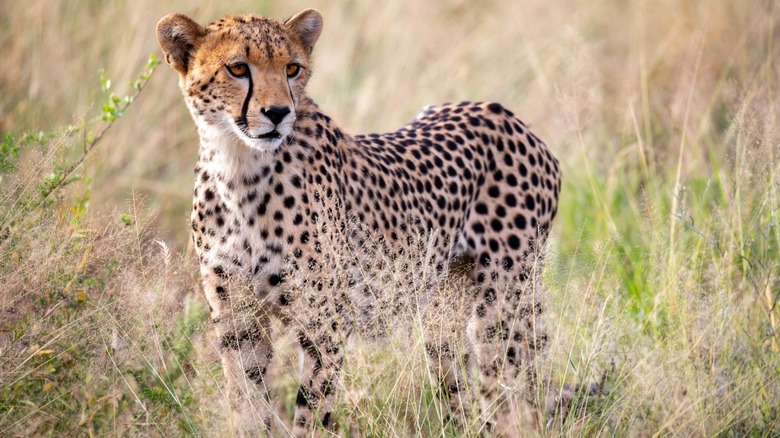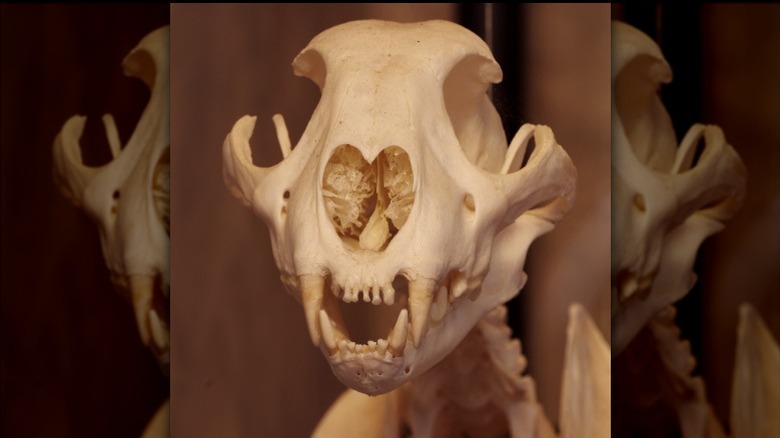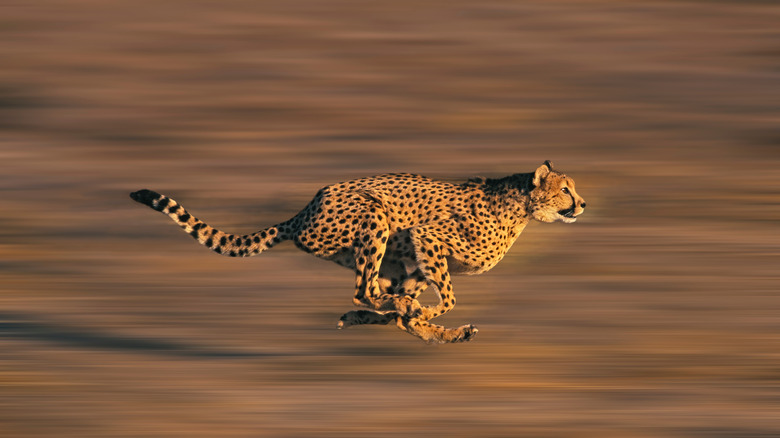The Prehistoric Cheetah That Roamed America Before The Last Ice Age
There are many fascinating prehistoric animal species that roamed the continent we know today as North America. According to Live Science, creatures like mammoths, ground sloths, and short-faced bears all called this location home. Though these massive creatures are all extinct, the proof that they once existed has been found in places like the La Brea Tar Pits and the Great Lakes region. Arguably one of the most unique prehistoric animals to be discovered is known as the American cheetah.
Most of us are likely familiar with the African cheetah which is known to be the fastest land animal on earth. The American cheetah however is a completely different species altogether and was native to the American continents. This variety of "cheetah" is different than its African cousin in many ways but is still somewhat shrouded in mystery due to the fact it has been extinct for approximately 12,000 years.
Similarities Between the Prehistoric and Modern Cheetahs
According to Roaring Earth, there are two designated species of American cheetah, Miracinonyx inexpectatus and Miracinonyx trumani. The fossils that were discovered were originally classified under the genera Felis, Puma, before being reclassified Both species share characteristics with the modern cheetah, namely shorter faces and larger nasal cavities as well as incredibly strong legs which are perfect for running. Additionally, they were believed to have weighed between 150 and 200 pounds and to have been between 5 and 6 feet in length (per Thought Co.). Modern cheetahs are significantly smaller weighing 75 to 119 pounds and measuring about 4 feet in length, according to Britannica.
Another similarity between both types of cheetahs is the kind of habitats that they lived in. Despite being on opposite sides of the globe and thousands of years apart, both prehistoric and modern cheetahs preferred similar hunting grounds. The American cheetah hunted in the grasslands of North America, while the modern cheetah stalks its prey on the savannahs of Africa.
The Debate That Still Exists
Even though their classification has been changed, there is still debate among scientists as to whether or not the American cheetah is really a true cheetah. When the remains of a juvenile American cheetah were discovered in a cave in the Grand Canyon, more questions about this creature were asked (per Live Science). These fossils showed that one of the species, Miracinonyx trumani may have been more different from the modern cheetah than originally thought.
The bones unearthed in the cave raised the possibility that this species of American cheetah may have not been as fast as the modern cheetahs of today. It also showed that they may have hunted for prey in more rocky terrain and on cliffs like those found in the Grand Canyon. It is now a possibility that these "cheetahs" may be more closely related to the genera Panthera instead. This species has proven to be particularly difficult to classify because it possesses characteristics from various types of big cats, including mountain lions, cheetahs, and snow leopards.


